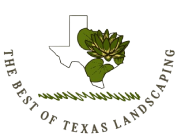Understanding the Importance of Pruning Practices for Trees
Trees play a crucial role in our environment, providing shade, oxygen, and beauty. However, maintaining their health requires more than just admiration. Regular care is essential to ensure they thrive and live longer. This means engaging in practices like pruning or cutting back branches. Proper techniques not only help trees grow but also keep them strong against diseases and harsh weather. Let’s dive into how these methods benefit your trees and what steps you can take to maintain their vitality.
What Happens When You Trim Your Trees?
Pruning involves removing specific parts of a tree, such as branches or buds. This process helps shape the tree and removes dead or dying limbs that could pose hazards. Additionally, it allows sunlight to penetrate through the canopy, which supports photosynthesis-a vital process for tree growth. By focusing energy on healthy branches, trees become more robust and better equipped to withstand environmental stressors.
The Benefits of Tree Trimming Techniques
Tree trimming is an essential practice for various reasons. Firstly, it prevents the spread of diseases by removing infected areas before they impact the entire tree. Secondly, it enhances air circulation within the foliage, reducing the risk of fungal infections. Finally, well-trimmed trees are aesthetically pleasing and can increase property value. Implementing these techniques ensures your trees remain healthy and visually appealing.
Common Challenges Without Proper Care
Trees left untrimmed can develop several issues over time. Dead branches may fall unexpectedly, posing risks to people and property. Moreover, dense foliage can prevent necessary light and air from reaching all parts of the tree, stunting growth. In some cases, heavy branches may break under their weight during storms, causing significant damage. Addressing these challenges through regular maintenance is crucial for safety and health.
Effective Steps for Maintaining Tree Health
- Start with regular inspections to identify any signs of disease or damage.
- Use clean, sharp tools to make cuts that promote quick healing.
- Avoid excessive trimming, which can weaken the tree.
- Schedule trimming during dormant seasons for best results.
- Consult with professionals when handling large or complex jobs.
Best Practices for Successful Tree Maintenance
Following expert recommendations can lead to healthier trees. Ensure you prune at the right times of year-typically late winter or early spring. Always cut branches at a slight angle close to the collar without leaving stubs. Remove only what is necessary to avoid stressing the tree. It’s also wise to regularly assess soil conditions and water accordingly to support overall growth.
Industry Standards for Safe Trimming
The International Society of Arboriculture (ISA) provides guidelines on safe pruning techniques. These include using appropriate equipment, understanding tree biology, and applying correct cutting methods. Adhering to these standards reduces risk while promoting effective management of tree health. Compliance ensures not only safety but also enhances long-term viability.
Cost Considerations: Investing in Future Growth
Caring for trees might seem costly upfront, but the benefits outweigh expenses over time. Professional services provide expertise that minimizes risks and maximizes tree health. Well-maintained trees add aesthetic value and can save money on potential damages caused by neglect. When budgeting for landscaping, consider the longevity and resilience properly trimmed trees offer.
Reach Out for Expert Assistance Today
If you’re keen on preserving the beauty and strength of your trees, consider professional help. Based in Southlake, TX, our team offers specialized services tailored to your needs. At Best of Texas Landscaping and Full Lawn Services, we prioritize quality care and customer satisfaction. Call us at (817) 602-7242 to schedule an assessment and secure your landscape’s future.
